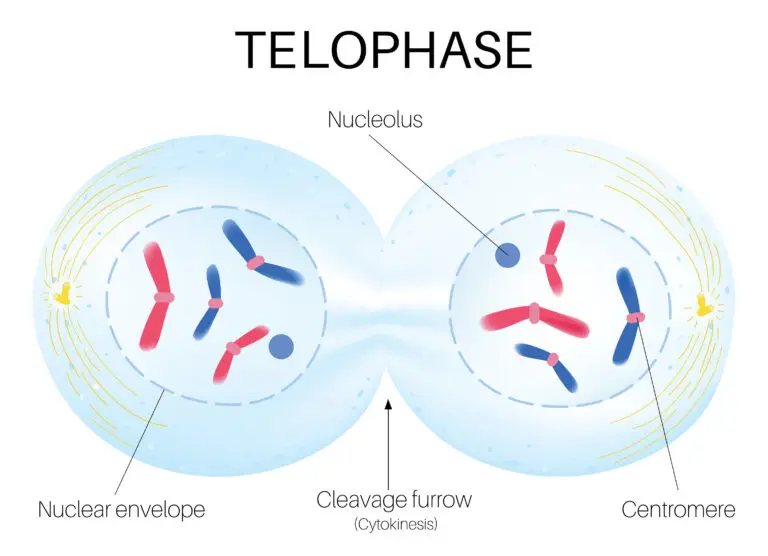Telophase

Table of Contents
What is Telophase?
Telophase is the final stage of cell division in eukaryotic cells, following anaphase, and is part of mitosis and meiosis. During telophase, the separated chromosomes reach the opposite poles of the cell, and several key events occur to prepare for the completion of cell division.
Key Events of Telophase
Chromosomes Arrive at Opposite Poles
The chromosomes, which were previously aligned at the metaphase plate and separated during anaphase, reach the opposite poles of the cell. The spindle fibers facilitate this movement.
Formation of Nuclear Envelopes
Nuclear envelopes, or membranes, form around each set of separated chromosomes. These membranes develop from the fragments of the parent cell’s nuclear envelope or endoplasmic reticulum.
Decondensation of Chromosomes
The chromosomes, which were condensed and easily visible during earlier stages of cell division, begin to decondense. This process involves the relaxation of the coiled DNA structure.
Reorganization of Nucleoli
Nucleoli, which temporarily disassemble during prophase, begin to reorganize within each daughter cell. Nucleoli are regions of the nucleus where ribosomal RNA synthesis occurs.
Spindle Fibers Disintegrate
The spindle fibers, responsible for separating the chromosomes during anaphase, disintegrate as their role is completed.
Cytokinesis Begins (in Animal Cells)
In animal cells, cytokinesis, the division of the cytoplasm, usually begins during late telophase. This process involves the formation of a cleavage furrow that progressively pinches the cell in two.
Related Links
Gamete
Meiosis
Metaphase
Prophase